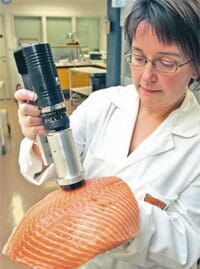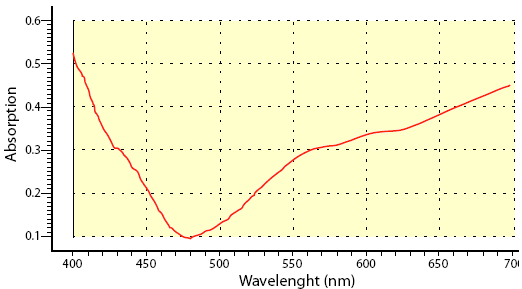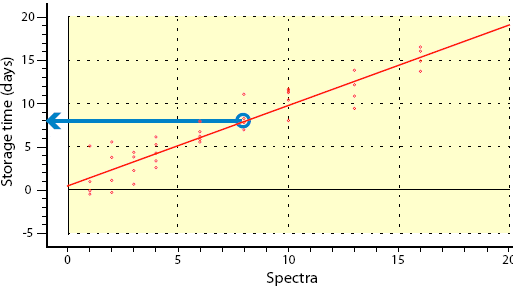At Aqua Nor, Fiskeriforskning demonstrates a freshness gauge that gives the answer at once.
To determine how fresh the fish is - and provided it has been properly stored - fish fillet producers work out the time since the fish was caught.
Different species of fish have different keeping qualities. For example, fresh salmon can be stored several days longer than fresh cod under the same storage conditions.
To more precisely determine how long the fish remains good, a bacteria counter is commonly used. But today's methods take time to produce results and often only one indicator of freshness is measured, such as texture, odour or colour.
Gauge freshness as quick as one-two-three
In recent years, researchers at Fiskeriforskning have developed a new measuring instrument that takes into account several factors. By using light at different wavelengths, it can quickly determine how fresh the fish is.
"This method is very reliable and can be used by seafood counters as well as in the industry to ensure that the product delivered is of good quality", explains senior researcher Heidi Nilsen.
The freshness gauge is so fresh that it is not yet on the market, but it is being demonstrated at the Aqua Nor aquaculture exhibition in Trondheim this week.
"You said fresh, didn't you?"
 |
| The spectrometer is placed above the fillet (photo). The colour spectrum is measured (Figure 1) and storage time is calculated on the basis of these measurements (Figure 2) |
The fish you buy in the shops isn't always as fresh as it should be. But it can be difficult to ascertain when the fish actually starts going bad. Today's methods of ensuring freshness aren't good enough because they only measure one indicator of whether the fish is fresh, such as texture, smell or colour. Therefore, scientists at Fiskeriforskning have in recent years developed new technology and a prototype for a measuring device - a spectrometer - that can tell how fresh the fish is in just three seconds.
"The method is very reliable and can be used in seafood counters as well as in the industry to ensure that high-quality products are delivered," says Senior Scientist Heidi Nilsen.
The instrument uses light at different wavelengths to see how fresh the fish is. The fish flesh will absorb light at different wavelengths according to how it is stored and how long it has been since it was caught.
Not only is the new method considerably faster than traditional analyses, which takes anywhere from a few hours to several days, the new device is also inexpensive to make.
"The device can be manufactured for a fraction of the cost of the larger analyser, and now we want to work with technology companies that can help develop it to a finished product," says Nilsen.
The method still needs adjustments before it can be used. For example, the scientists have to study whether the seasonal variations of the fish flesh will affect the measuring results, and this has to be done over a two-year period.
 |
| Figure 1 |
 |
| Figure 2 |
How to check fresh fish
 |
| Good fish? Scietntist Margrethe Esaiassen at Fiskeriforskning is an expert in fish quality, but the consumers don't have to be experts in order to check whether the fish is as it should be, she points out. |
More and more pre-packed fresh fish is being sold in Norway. But many consumers are still unsure when they're going to assess the fish's quality.
Actually, it's easy to find out whether it is as it should be, but when the fillet is lying in a package with a plastic over it, you can't smell the fish.
Senior Scientist Margrethe Esaiassen at Fiskeriforskning believes that the consumer still gets a good impression of the freshness by checking the fillet's appearance.
"Pre-packed fish has a use-by date and basically, the consumer has to trust that those who produce and sell the fish are doing their jobs. When you get home, you can also check the quality by smelling the fillet. If it smells bad, you should return the fish to the shop," says Esaiassen.
Three rules of thumb for fresh salmon and cod
Fresh salmon fillet should have:
- Consistent red colour - when it starts going bad, it will have a blotchy surface.
- Shiny and dry surface - when it starts going bad, it gets a slimy greyish coating.
- Fresh odour - it can also smell like melon or cucumber. If it's bad, it will smell rotten, like a sour dishcloth.
Fresh cod fillet should have:
- An even, light surface -the fish is bad if it has yellow spots and transparent parts on the surface.
- Shiny and dry surface - bad fish has a coating of slime on the surface.
- Fresh odour - sea-fresh, or neutral to weak odour. The fish is starting to go bad if it has a sharp, strong odour.
August 2007


